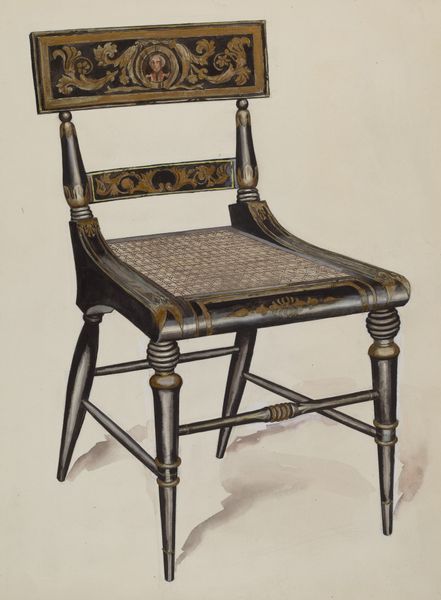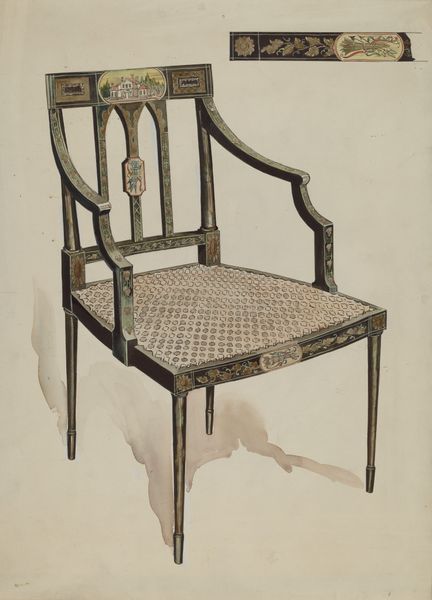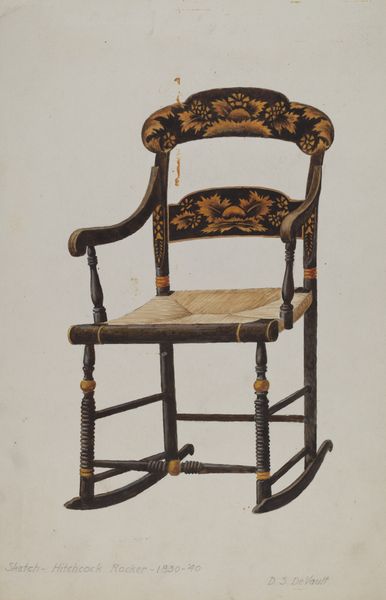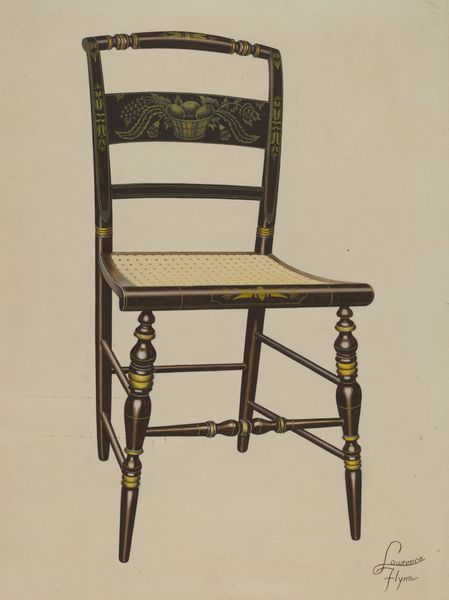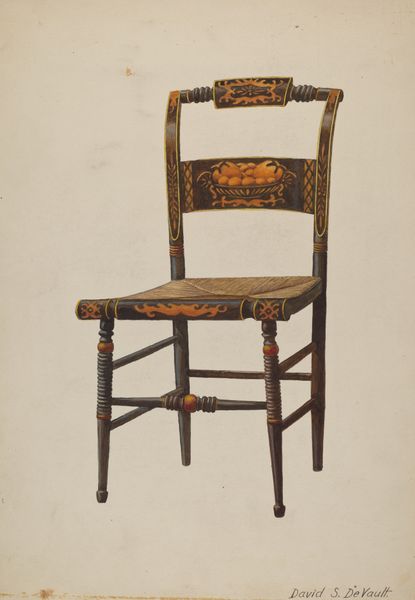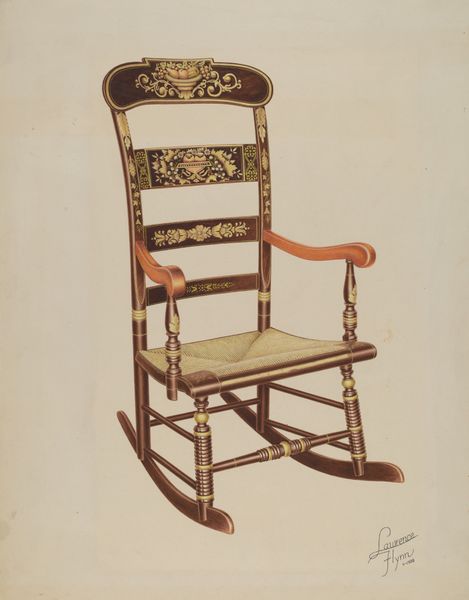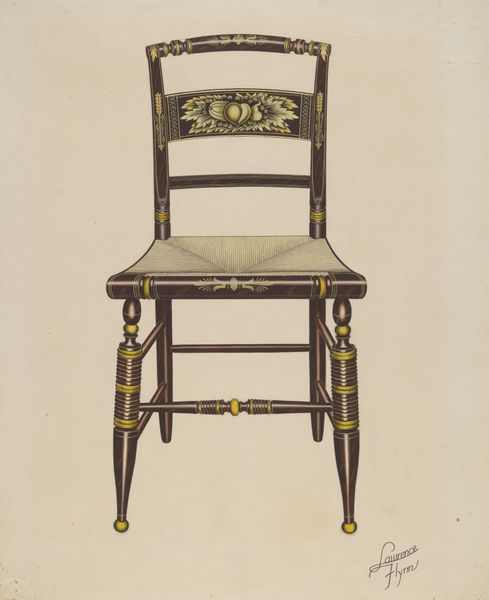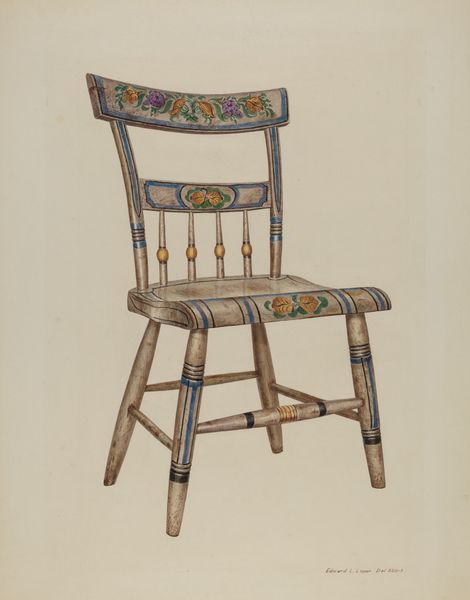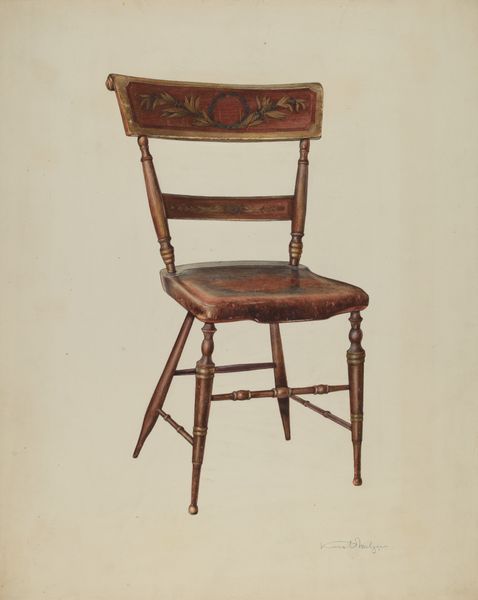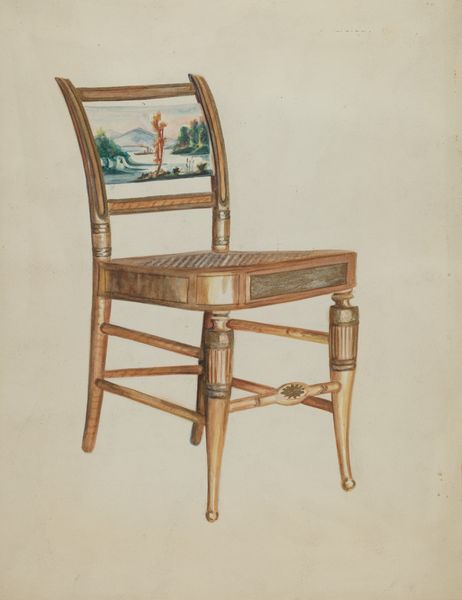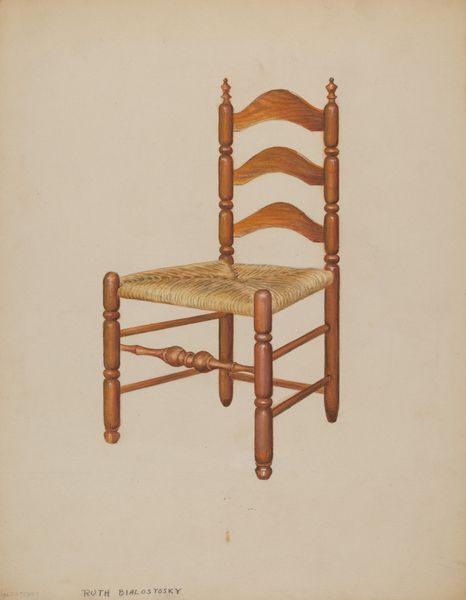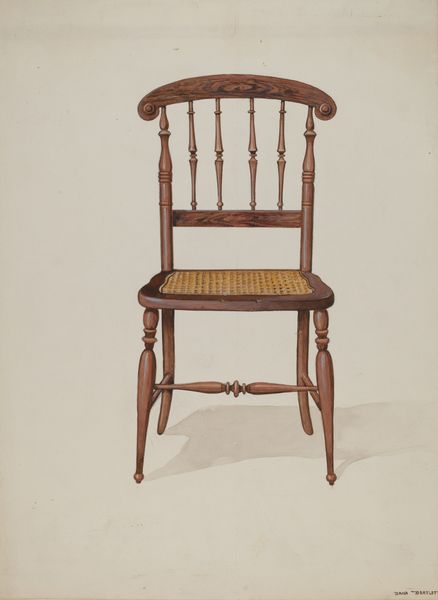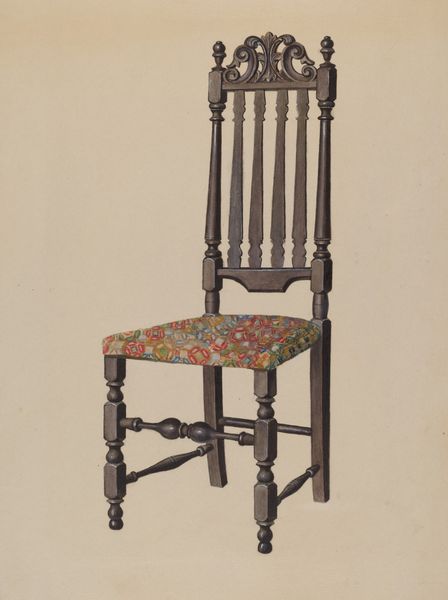
drawing, watercolor, pencil
#
drawing
#
charcoal drawing
#
oil painting
#
watercolor
#
pencil
#
watercolour illustration
#
charcoal
#
watercolor
Dimensions: overall: 35.7 x 26 cm (14 1/16 x 10 1/4 in.) Original IAD Object: 32 1/2"high x 19"wide. See data sheet for dets.
Copyright: National Gallery of Art: CC0 1.0
Curator: This is a drawing of a chair made around 1936, attributed to Lillian Causey. It’s rendered using a combination of pencil, charcoal, and watercolor. Editor: My initial reaction is one of nostalgia. It's rendered with such care; it feels like a lost artifact, precious in its quiet way. Curator: It’s interesting you say that. The techniques themselves – pencil, charcoal, watercolor – they're quite accessible, domestic almost, which contrasts with the regal object depicted. The image also provides us insight to methods of furniture decoration, since this piece is embellished with painted imagery of bucolic life and stylized forms, echoing the natural world. Editor: Absolutely, the chair itself appears almost as a miniature stage for symbolic narratives. Look at the back; the inlaid panel seemingly depicts an agrarian scene. This is likely about invoking idealized notions of simplicity, and a pre-industrial past—the ultimate comfort. What is your impression of the image panel inlaid into the piece near the seat back? To me it feels like a motif relating to fruitful abundance. Curator: Yes, and I'm struck by the labor required to create this level of ornamentation. We often separate furniture design from other forms of artistic production, but this piece challenges that division. The time taken to plan and construct this chair suggests it wasn't intended for simple, utilitarian purposes, it hints that domestic life itself was art. Editor: The chair is a throne in disguise! The pattern in the seat adds to this sensation, appearing like elaborate, hand-crafted fabric. Consider the intention: a piece of furniture elevated into a carrier of cultural ideals. Chairs have always been associated with hierarchy, a symbol of authority as much as a tool of comfort. Curator: Well, exactly, even the materials themselves point to hierarchies of value. Perhaps the artist wanted to make a statement about accessibility—presenting fine craftsmanship, yet employing common art supplies. In a world increasingly defined by mass production, this evokes the dignity of hand-made practices, but without romanticizing the intense labor involved. Editor: I see what you mean, the very act of representing this ornamented object might be understood as a mediation on both access and privilege. It also might suggest a certain kind of mourning over these hierarchies, with so much work distilled into this image of furniture. Curator: On reflection, this drawing, even with its somewhat humble materials, demands that we look closer at how objects transmit values and status, it begs the question: what is art if not elevated labor? Editor: Indeed. By examining it through both material and symbolic lenses, we've uncovered more than just a drawing of a chair. We’ve opened up ways to considering social values associated with labor, status, and our relationship to historical objects.
Comments
No comments
Be the first to comment and join the conversation on the ultimate creative platform.
